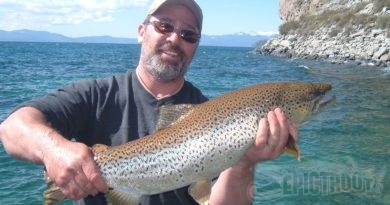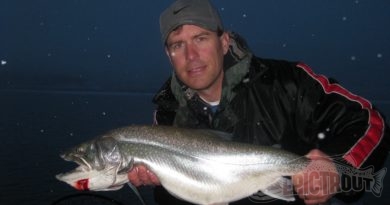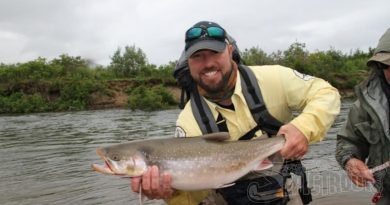Hidden In Plain View
In this article I would like to revisit parts an article that I wrote regarding lure painting and color. Custom lures have always been attractive to fishermen as well as to fish. I have a many friends who do not airbrush their own lures but that doesn’t keep them from having some of the most productive color patterns in their tackle box for trophy trout. They search and find custom lure painters who charge a small fortune for their little piece of art work. Unfortunately, just as most artists do, they move onto different forms of art and the fisherman is left with no one to paint lures for him. The whole process repeats itself with a new painter year after year. Because these lures are a custom blend of colors and techniques they can be very hard for another painter to duplicate. This is the very reason I decided to airbrush lure for myself years ago.
One of my favorite techniques that is go outside of the box and hide an irredescent, shimmering, or ultraviolet color in my paint schedule. In most conditions this is nearly invisible to the human eye. These colors become visible again under the right conditions. For instance, consider ultraviolet. The human eye cannot detect this color, but fish can. The key is to remember that human eyes are different than trouts’ eyes. Within the human eye the retina has rods and cones. The rods detect shades of black and white while the cones register the colors. There are red, green, and blue cone receptors in the retina of the human eye. The combination of these cones offer the complete spectrum of colors.
Trout, on the other hand, have four cones. The first is similar to the human red cone, but its sensitivity range includes longer wavelengths than humans. For this reason I like to blend red into several of my lure paint schedules. Next comes green then followed by blue. The fourth is invisible to humans without the help of filtered light “ultra-violet.” Ultra-violet light is the shortest wavelength of visible light. Ultra-violet light penetrates the water column deeper than normal, visible light. Shallow water has 20% natural light. As light beams descend into deeper water it becomes 100% ultra-violet light. This is all relevant to water clarity. To a fisherman, that means lures with ultra-violet added should be more visible to fish, especially in low-light conditions.

Here is the same lure. One of the photos is taken in normal light and the other photo is taken with light added from a UV filter. This will give you a good idea of what the lure will look like to a trout at low light conditions.

Here is another set of photos with the same lure taken under a different light source. The lure is NOT painted with glow-in-the-dark paint. It is painted with layers of semitransparent dark colors and ultra-violet paints. The scales only show themselves to the human eye when hit with an ultra-violet light source. When the water color is stained and lighting is right this pattern is incredible. To the average person this lure looks black. In fact, I have had several fellow fishermen comment to me that they heard I catch a lot of big brown trout on all black lures. Isn’t it funny how things don’t always look as they sometimes appear?
Brad Stout




